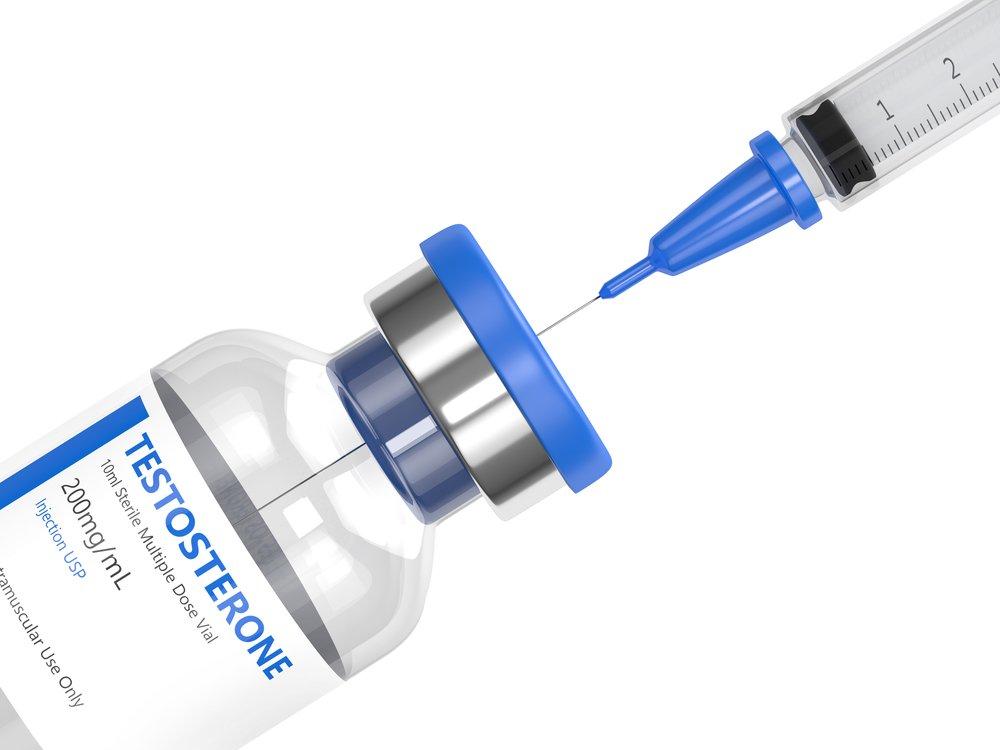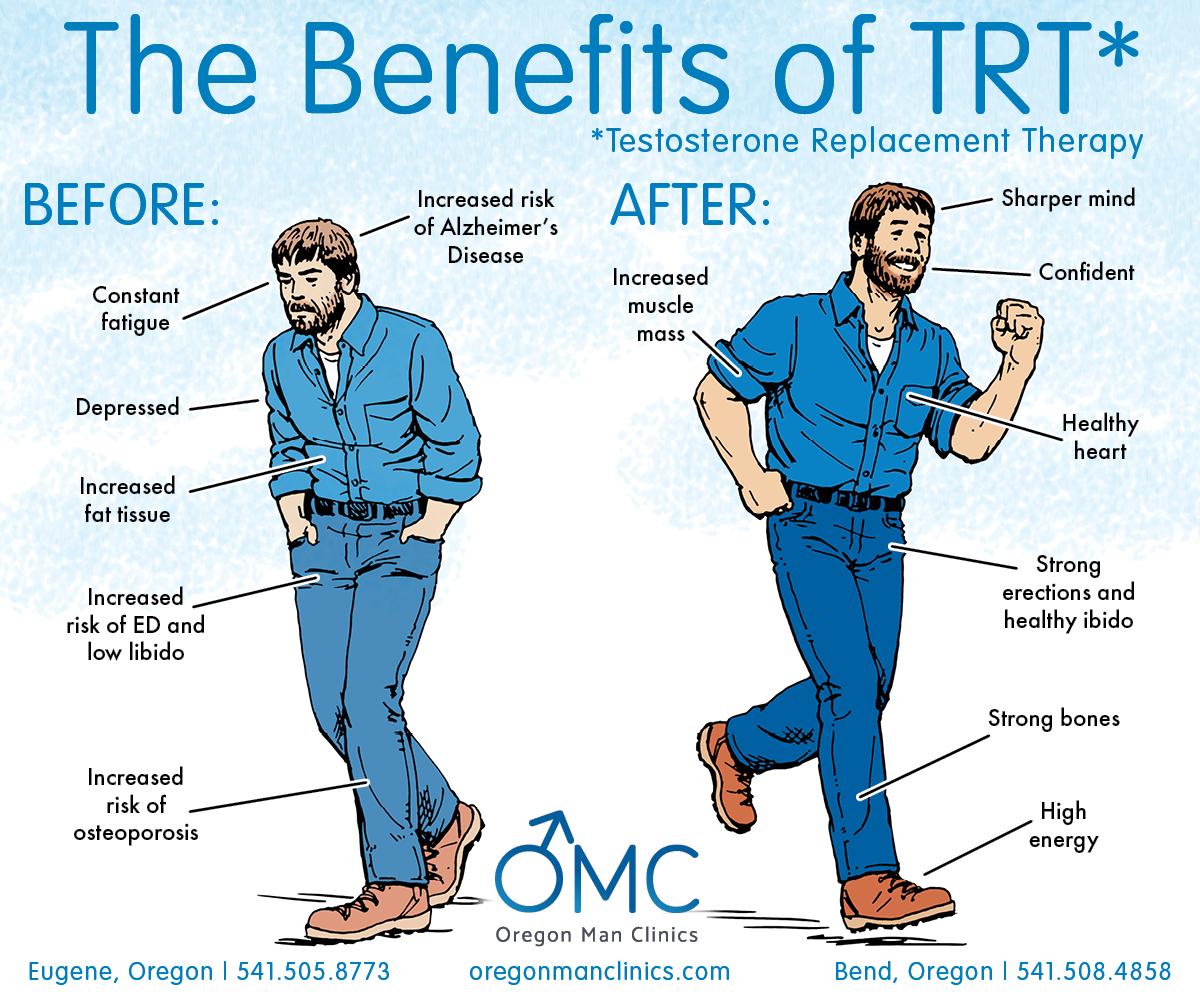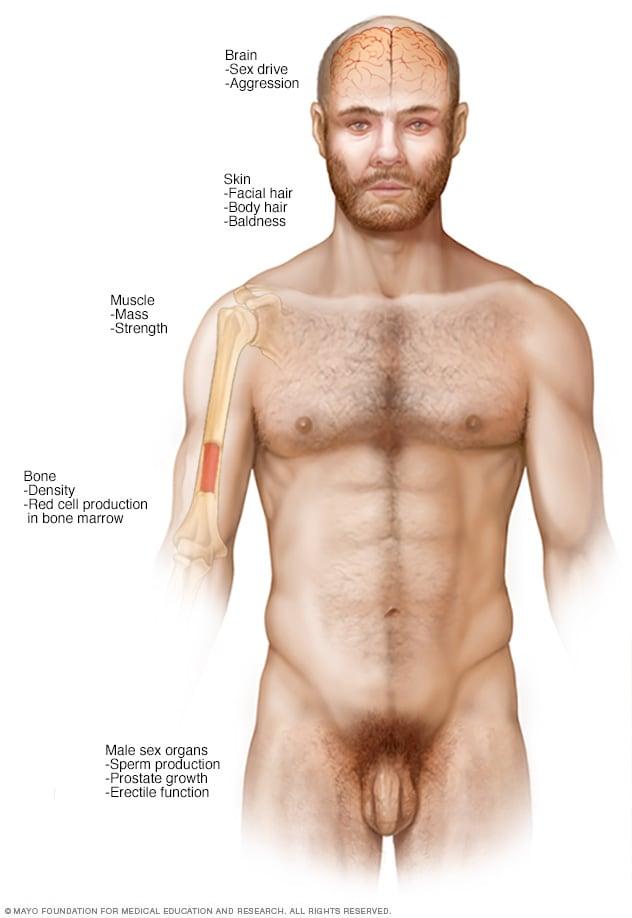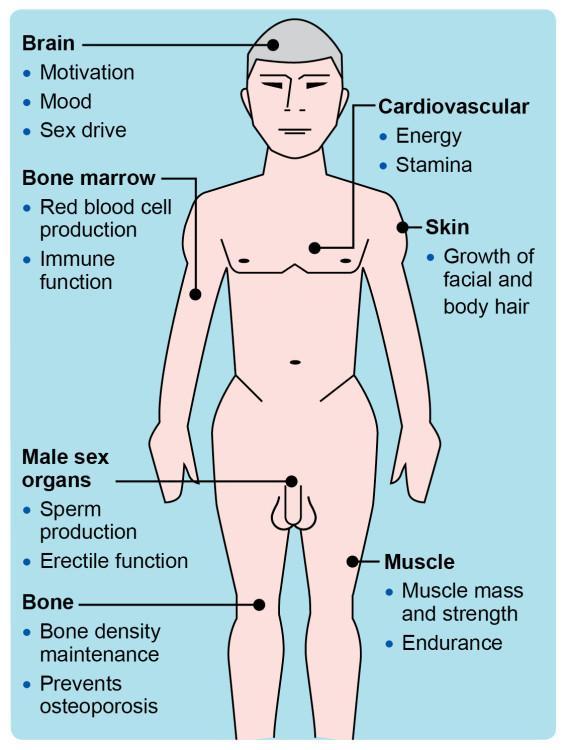Title: Unraveling the Link: Testosterone Therapy and Sleep Apnea
In the intricate dance of hormones that governs our bodies, testosterone often takes center stage, playing a crucial role in mood, energy, and overall health. However, as the popularity of testosterone therapy continues to rise, so too does the interest in its broader implications—especially concerning sleep. One area of particular intrigue is the potential relationship between testosterone therapy and sleep apnea, a condition characterized by disrupted breathing during sleep that affects millions worldwide. As we delve deeper into this complex interplay, we aim to shed light on how testosterone therapy may influence sleep patterns, the mechanisms at play, and the potential benefits and risks for those grappling with sleep disorders. Join us as we explore this multifaceted topic, navigating through the science, the studies, and the stories that connect these two seemingly disparate realms of health.
Understanding the Connection Between Testosterone Therapy and Sleep Apnea
Testosterone therapy has gained popularity for its benefits in enhancing energy levels, mood, and overall well-being. However, its relationship with sleep apnea, a serious sleep disorder characterized by interrupted breathing during sleep, is an area of increasing concern. Studies suggest that there may be a dual relationship between testosterone levels and sleep apnea. On one hand, lower testosterone levels are often observed in individuals with sleep apnea, potentially as a consequence of chronic sleep deprivation or disrupted sleep patterns. On the other hand, testosterone therapy has the potential to exacerbate pre-existing sleep apnea symptoms, leading to more severe episodes of airway obstruction at night.
Understanding this connection is crucial for those considering or undergoing testosterone therapy. It is essential to monitor risk factors, sleep quality, and testosterone levels concurrently. The following factors should be considered when discussing treatment options:
- Pre-existing conditions: Prior diagnosis of sleep apnea should be assessed before starting therapy.
- Regular sleep assessments: Regular sleep studies can help gauge the impact of therapy on sleep patterns.
- Medical supervision: Ongoing consultations with healthcare professionals are vital for safety.
| Factor | Impact of Testosterone Therapy |
|---|---|
| Body weight | Excess weight can worsen sleep apnea; therapy may affect weight management. |
| Age | Older adults are at higher risk; therapy effects may vary with age. |
| Comorbid conditions | Conditions like hypertension can complicate both testosterone therapy and sleep apnea. |

The Role of Testosterone in Sleep Regulation
Testosterone, a hormone primarily known for its role in male development and reproductive health, also plays a significant role in regulating sleep patterns. Research indicates that testosterone levels can influence the different stages of the sleep cycle, particularly the duration and quality of REM sleep. When testosterone levels are balanced, individuals may experience deeper, more restorative sleep, which is essential for overall health. Conversely, low testosterone levels have been associated with sleep disturbances, including increased instances of insomnia and disrupted sleep architecture.
The relationship between testosterone and sleep apnea is particularly intriguing. Studies have shown that men with obstructive sleep apnea (OSA) often have lower testosterone levels compared to those without the condition. This might create a vicious cycle, where sleep apnea contributes to testosterone deficiency, further aggravating sleep issues. In addition, treating sleep apnea through methods such as continuous positive airway pressure (CPAP) therapy can help restore testosterone levels, leading to symptom relief. Below are some potential benefits of testosterone therapy in relation to sleep quality:
- Improved sleep efficiency: Enhanced nighttime restfulness.
- Increased REM sleep: Better overall sleep quality.
- Reduction in sleep disturbances: Fewer awakenings during the night.

Signs and Symptoms of Sleep Apnea in Testosterone-Treated Patients
For individuals undergoing testosterone therapy, recognizing the signs and symptoms of sleep apnea becomes crucial, as this condition can be exacerbated by hormonal treatments. Patients may experience snoring, which is often loud and obstructive, along with gasping or choking during sleep, indicating interruptions in breathing. Other common manifestations include excessive daytime sleepiness, where individuals struggle to stay awake during normal activities, leading to decreased productivity and an increased risk of accidents. Furthermore, symptoms like morning headaches and difficulty concentrating can create a frustrating cycle of fatigue and cognitive decline.
Monitoring signs such as irritability and mood swings is equally important, as these can indicate the physiological toll of disrupted sleep patterns. In some cases, patients may also report experiencing restless leg syndrome, which could further entrench sleep disturbances. Below is a simple table to outline the prevalent symptoms observed in testosterone-treated patients experiencing sleep apnea:
| Symptom | Description |
|---|---|
| Snoring | Loud and disruptive breathing patterns during sleep. |
| Excessive Daytime Sleepiness | Persistent fatigue impacting daily activities. |
| Gasping or Choking | Signs of halted or strained breathing while asleep. |
| Mood Changes | Increased irritability and emotional instability. |
| Morning Headaches | Consistent headaches upon waking, often linked to lack of restful sleep. |

Evaluating the Risks: Testosterone Therapy Complications
Testosterone therapy has gained popularity for its benefits in treating low testosterone levels; however, it is essential to consider the potential complications associated with its use, particularly concerning sleep apnea. Research indicates that testosterone replacement may exacerbate this condition or increase the risk of developing it in susceptible individuals. Sleep apnea is characterized by repeated interruptions in breathing during sleep, leading to fragmented sleep, daytime fatigue, and other health issues such as cardiovascular problems and insulin resistance. Individuals already diagnosed with sleep apnea should approach testosterone therapy with caution and undergo regular monitoring to assess their condition.
During treatment, healthcare providers may need to evaluate a range of factors before initiating testosterone therapy. These include:
- Pre-existing sleep disorders: A thorough assessment of any prior sleep issues is critical.
- Body mass index (BMI): Obesity is a significant risk factor for sleep apnea and may influence therapy outcomes.
- Cardiovascular health: Monitoring heart health is essential, as sleep apnea can increase cardiovascular risk.
Specifically, studies suggest a cautious approach in men with moderate to severe obstructive sleep apnea, highlighting the importance of a tailored treatment plan. Collaborative discussions between patients and healthcare providers regarding the risks and benefits of testosterone therapy are paramount for a safe treatment journey.
Management Strategies for Sleep Apnea During Testosterone Treatment
Management of sleep apnea during testosterone treatment requires a comprehensive approach that balances hormone therapy and the respiratory health of the patient. It is essential to regularly monitor symptoms of sleep apnea, particularly in individuals who are starting testosterone therapy. Collaborative care with healthcare professionals such as sleep specialists, endocrinologists, and primary care physicians can enhance management strategies. Key interventions may include:
- Continual assessment of sleep quality: Using tools like sleep diaries and polysomnography.
- Adjustment of testosterone dosage: Ensuring it remains within therapeutic ranges to minimize exacerbation of apnea symptoms.
- Weight management programs: Encouraging lifestyle changes to reduce obesity, which is a significant risk factor for sleep apnea.
In addition to regular monitoring, patients may benefit from the use of positive airway pressure (PAP) therapy, which can effectively treat obstructive sleep apnea. Integrating this treatment with testosterone therapy often requires careful timing and communication between all care providers involved. An ongoing assessment of patient symptoms can guide adjustments in treatment plans. Consideration should also be given to supplementary therapies such as:
- Oral appliances: Dental devices designed to keep the airway open.
- Positional therapy: Encouraging patients to maintain sleeping positions that minimize airway obstruction.
- Behavioral interventions: Strategies like smoking cessation and reducing alcohol intake that can improve sleep apnea symptoms.
Integrating Sleep Health into Hormone Therapy Plans
When considering testosterone therapy, it’s crucial to understand how sleep health intertwines with hormonal balance. Sleep apnea, a serious disorder characterized by interrupted breathing during sleep, can significantly impact testosterone levels and overall health. Integrating sleep assessments into hormone therapy plans not only aids in optimizing testosterone treatments but can also enhance the patient’s quality of life. This is particularly vital for individuals experiencing symptoms of both conditions, as improving sleep can lead to better hormonal regulation and alleviate the adverse effects of testosterone deficiency.
Employing a multidisciplinary approach can be beneficial for patients undergoing testosterone therapy, especially those diagnosed with sleep apnea. Here are some key considerations for healthcare providers:
- Screening for Sleep Disorders: Regular screenings using validated questionnaires can help identify sleep apnea risk.
- Collaboration with Sleep Specialists: Partnering with specialists can facilitate comprehensive treatment plans tailored to the individual’s needs.
- Lifestyle Modifications: Advocating for weight management, exercise, and dietary changes can support better sleep hygiene.
- Monitoring Therapy Responders: Tracking the patient’s response to hormone therapy and their sleep quality can lead to timely adjustments in treatment.
| Sleep Health Impact | Testosterone Therapy Benefits |
|---|---|
| Improved Sleep Quality | Enhanced Hormonal Balance |
| Reduced Daytime Sleepiness | Increased Energy Levels |
| Better Mood Regulation | Improved Cognitive Function |
Seeking Professional Guidance for Optimal Outcomes
When addressing the intricate relationship between testosterone therapy and sleep apnea, it’s vital to seek out professional expertise. Engaging with healthcare professionals who specialize in endocrine health and sleep medicine can provide a comprehensive understanding of how testosterone levels may influence sleep patterns. These experts can evaluate your specific circumstances and medical history, ensuring that any therapeutic interventions are tailored for optimal results. Consider consulting the following specialists for a holistic approach:
- Endocrinologist: Focuses on hormonal health and can assess testosterone levels accurately.
- Sleep Specialist: Analyzes sleep apnea severity and recommends appropriate treatments.
- Primary Care Physician: Coordinates overall health management and refers you to specialists.
In addition to individual consultations, collaborative care among these professionals plays a significant role in evaluating the risks and benefits associated with testosterone therapy. To facilitate discussions about potential treatment pathways, patients can benefit from maintaining a journal detailing sleep quality, apnea events, and overall health. This proactive approach enables tailored strategies that align with personal health goals. Below is a brief comparison that may help in discussions with your healthcare providers:
| Factor | Normalization Effect | Monitoring Required |
|---|---|---|
| Testosterone Therapy | May improve sleep quality | Regular blood tests |
| Sleep Apnea Treatment | Reduces apnea events | CPAP adherence checks |
Q&A
Q&A: Testosterone Therapy and Sleep Apnea
Q1: What is testosterone therapy, and why is it prescribed?
A1: Testosterone therapy involves the administration of testosterone to individuals with low levels of this hormone, often due to conditions like hypogonadism. It is prescribed to alleviate symptoms such as fatigue, low libido, mood changes, and muscle weakness, aiming to restore hormonal balance and improve overall well-being.
Q2: What is sleep apnea, and how does it affect health?
A2: Sleep apnea is a sleep disorder characterized by repeated interruptions in breathing during sleep, often due to an obstruction in the airway (obstructive sleep apnea) or a malfunction in the brain’s control over breathing (central sleep apnea). Symptoms include loud snoring, gasping for air, and excessive daytime sleepiness, which can lead to serious health issues like cardiovascular disease, high blood pressure, and impaired cognitive function if left untreated.
Q3: Is there a link between testosterone therapy and sleep apnea?
A3: Yes, research suggests a connection between testosterone therapy and sleep apnea, particularly in men. Increased testosterone levels can contribute to the worsening of existing sleep apnea, potentially leading to more frequent obstructive events during the night. This is especially relevant for patients already diagnosed with sleep apnea before starting therapy.
Q4: Should individuals with sleep apnea consider testosterone therapy?
A4: Individuals with sleep apnea should approach testosterone therapy with caution. It’s critical to assess the severity of sleep apnea beforehand. Consulting a healthcare professional is essential to weigh the benefits against potential risks and to tailor a treatment plan that considers both conditions.
Q5: Are there any alternatives to testosterone therapy for managing low testosterone levels?
A5: Yes, there are alternative approaches to managing low testosterone levels that do not involve hormone therapy. These can include lifestyle changes such as weight loss, exercise, diet improvement, and managing underlying health conditions. Additionally, medications and supplements might be suggested depending on individual circumstances.
Q6: How can sleep apnea be effectively managed for those undergoing testosterone therapy?
A6: For patients receiving testosterone therapy who also suffer from sleep apnea, regular monitoring and a comprehensive treatment plan are crucial. This might include the use of Continuous Positive Airway Pressure (CPAP) machines, lifestyle changes (like weight management), and ongoing communication with healthcare providers to ensure both conditions are effectively managed.
Q7: What should patients discuss with their doctor before starting testosterone therapy?
A7: Patients should have an open dialogue with their doctor about their full medical history, including any existing sleep disorders like sleep apnea. It’s also important to discuss symptoms, lifestyle factors, and any medications they are currently taking. Together, they can weigh the benefits and risks, ensuring that any therapy plan is safe and tailored to their needs.
Q8: Can sleep apnea improve after starting testosterone therapy?
A8: While some anecdotal evidence suggests that testosterone therapy may improve sleep quality for some individuals, this is not universally applicable. In fact, testosterone therapy can exacerbate sleep apnea in others. Thus, monitoring and periodic evaluations are essential to understand how therapy impacts sleep patterns and overall health.
Conclusion: Understanding the complex relationship between testosterone therapy and sleep apnea is crucial for those considering or currently undergoing treatment. Always consult a healthcare professional before making any changes to your treatment regimen to ensure a safe and effective approach to managing both conditions.
Insights and Conclusions
As we conclude our exploration of the intricate relationship between testosterone therapy and sleep apnea, it becomes clear that the connection is far from straightforward. While testosterone can play a significant role in overall health, its implications for sleep apnea present a nuanced picture that requires careful consideration.
For those considering testosterone therapy, it is essential to engage in thorough discussions with healthcare providers who can offer tailored advice based on individual health profiles. Monitoring and managing sleep apnea symptoms through appropriate interventions can not only enhance sleep quality but may also optimize the benefits of hormone therapy.
In this journey towards better health, awareness and informed decision-making are key. As research continues to unfold, staying updated on emerging findings will empower individuals to navigate the complexities of these two intertwined aspects of health. Ultimately, fostering a holistic understanding of both testosterone therapy and sleep apnea will lead to more effective management strategies, paving the way for healthier, more restful lives.










